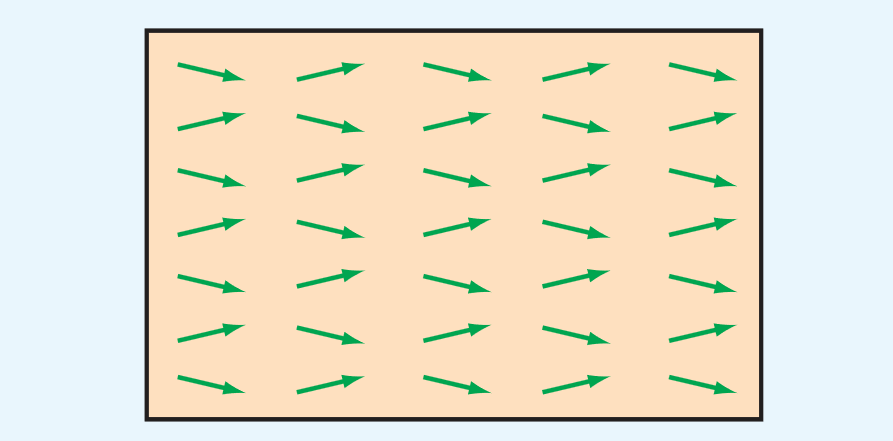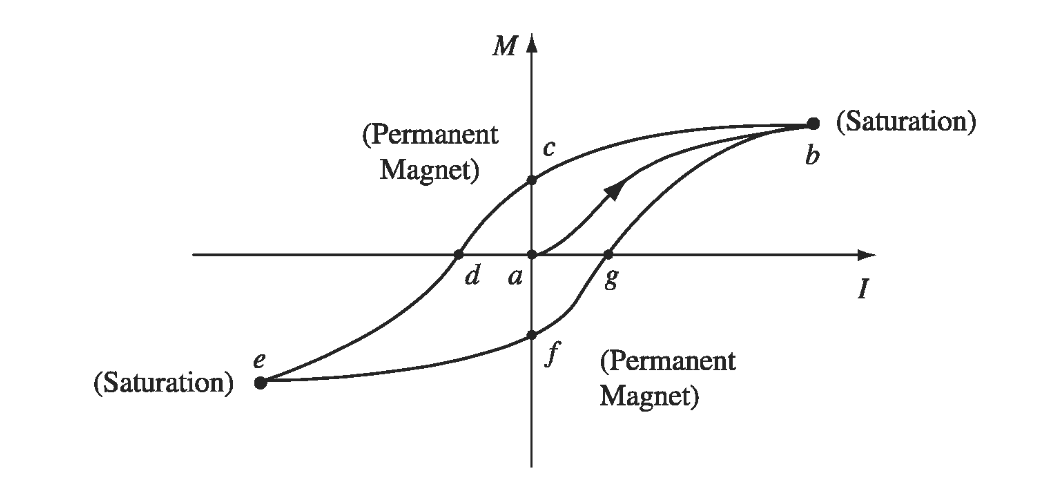Ferromagnetism describes a broad class of magnetic materials (like iron). They retain their magnetisation even when an external field has been removed. They have a strong permanent magnetic dipole moment and are predominantly magnetised by a mechanism called magnetised domains.
Ferromagnets are used as cores within electric machines and transformers.
Magnetised domains
Domains refer to microscopic regions (about atoms thick) that are permanently aligned with each other. All ferromagnets have this alignment — strong coupling forces between the magnetic dipole moments mean that they will align together. Under no influence of an external magnetic field, the domains may look like the take on a random orientation:1
 With an external magnetic field, the domains all align together:
With an external magnetic field, the domains all align together:

Hysteresis
The effect of the magnetic field is to move the boundaries between each domain, such that domains parallel to the field will grow and the others will shrink. If the field is strong enough, one domain will take over and the material will be saturated.
When the external field is removed, there will be some return to randomly oriented domains but many will stay aligned as if there was still an external field. This can be done by wrapping a coil around the object.
All of this is defined by a hysteresis curve. The idea is that we start with no external current and no magnetisation. As we increase the current, we reach saturation where no further increases have any effect on the magnetisation. Then, if we decrease the current, we take a different path back (i.e., the initial effect isn’t reversible) such that we have a permanent magnet even with . The further we decrease the current, we reach saturation again.
In practice, the hysteresis curve below should have axes where we replace current for and magnetisation for .2 The current graph is intuitively easier to understand though.

Hard ferromagnets have wide hysteresis loops and are more difficult to demagnetise because they have a large residual magnetisation . This property makes for good permanent magnets. Soft ferromagnets have narrower hysteresis loops (that hug the axes better). They are easier to demagnetise and are used in transformers.